If marketing and PR are your bread and butter, you should always know what your target audience is saying about you. But even broader than that, what does the general public think about your brand and how are media outlets reporting on you?
Checking in occasionally is just not an option, you need daily media monitoring.
Today, we'll show you what daily media monitoring is and why it's necessary in 2025 and beyond.
Try Prowly's media monitoring free for 7 days
Start tracking your brand and keywords for free (no credit card required) in Prowly.
- Comprehensive monitoring: Track the web and social media mentions.
- Transparent pricing: Plans start at $258/month
- All-in-one platform: Get everything you need in one tool for PR, incl. media database, outreach, reporting, and more
Why daily media monitoring is no longer optional
If you look at Worldometer's counter, you'll notice millions of blogs are published daily. And that's not accounting for the news, videos, tweets, social media posts, or other content types.
Like readers, viewers and listeners, PR professionals are drowning in the media noise. Finding content that matters is becoming more challenging by the day.
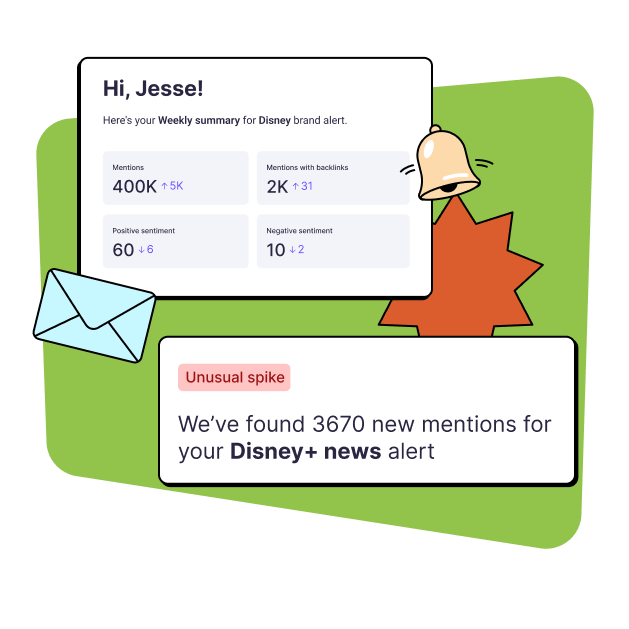
This is why daily media monitoring is necessary: with it, you can always stay alert about the latest mentions of your client or brand. And with the right media monitoring solution, you can monitor only the most relevant mentions and drown out the noise.
💡 The difference between a PR crisis and a PR win?
How quickly you spot and control the narrative.
What daily media monitoring solves
By monitoring mentions daily, you'll take care of several problems at once:
- No more media blind spots: you won't have issues catching mentions when a viral meme or a PR crisis is already yesterday's news
- You shape the conversation early: you can react, create your own content, and respond to others, participating rather than commenting once something is over
- Keep your competitors in check: monitor what they publish and where, how your target audience perceives them, and what they're doing (and not doing) well
The three biggest mistakes PR teams make with daily media monitoring
If you're new to media monitoring as a part of PR, it can be easy to make mistakes. Not even having the best and most expensive media monitoring tools can save you if you don't know the foundations.
Mistake 1: tracking too much
If you have a big brand and set up media monitoring for relevant terms, you'll be flooded with daily mentions. Imagine working for Tesla and trying to track down every mention of Tesla across websites and social media daily.
Not every mention matters and you should focus only on those most relevant to your product and target audience.
With tools like Prowly, you can filter mentions by source, country, language, outlet type, and much more, so you only get the most relevant mentions in real time.

💡 How to fix this: Set up smart alerts in Prowly to track only high-impact mentions, journalists, and key topics.
Mistake 2: tracking too little
You can easily go too narrow with your media monitoring searches and miss out on key mentions. For example, if you run the PR team at Tesla, you'll want to include other relevant terms besides your brand term, such as:
- Tesla Cybertruck
- Tesla stocks
- Tesla Model X
- Tesla car price
With media monitoring software, you can also track relevant competitor terms.
For example, suppose you see a sudden spike in mentions with negative sentiment about a competitor. In that case, it's a sign of an ongoing crisis and a chance for you to swoop in and steal some of the attention (and potentially customers).
💡 How to fix this: Use sentiment & credibility scoring as not all coverage is equal.
Mistake 3: reacting too slowly
PR and communications professionals must stay on their toes and watch for mentions as they roll in. If you're too slow and a competitor has a proper social media crisis, you can miss your window and only react when it's too late.
Instead, monitor mentions as they happen. Tools such as Prowly alert you when there is a spike in negative media mentions so you can react as a crisis unfolds.
💡 How to fix this: Automate tracking across news, social, blogs, and forums to monitor in real-time.
💡 Tip: Explore this article to learn more about how reactive PR compares to proactive PR—and how to put it into action.
Prowly helps filter the noise, so PR teams get the right alerts—without data overload.
How to track press coverage & brand mentions in real-time
PR teams need a structured system for daily media tracking. Instead of manually scanning news all day, a streamlined workflow ensures nothing important slips through.
Here's a handy 5-step daily media monitoring routine:
1. Morning check-in (5 min)
As the first thing in the morning, take a look at your mentions from top-tier magazines for your brand and clients. Also, take the time to look at competitors: where they were mentioned and in what contexts.
At this time, you can review queries from relevant journalists in your industry and identify the most popular topics they're covering for the day.
Your morning check-in can take about 5 minutes if you schedule automatic media round-ups. Some advanced tools let you send AI coverage summaries to internal and external recipients.

2. Midday deep dive (15 min)
Tally up all your media mentions for the day. Get an overall review of their sentiment by taking a look at your dashboard (in a tool such as Prowly).
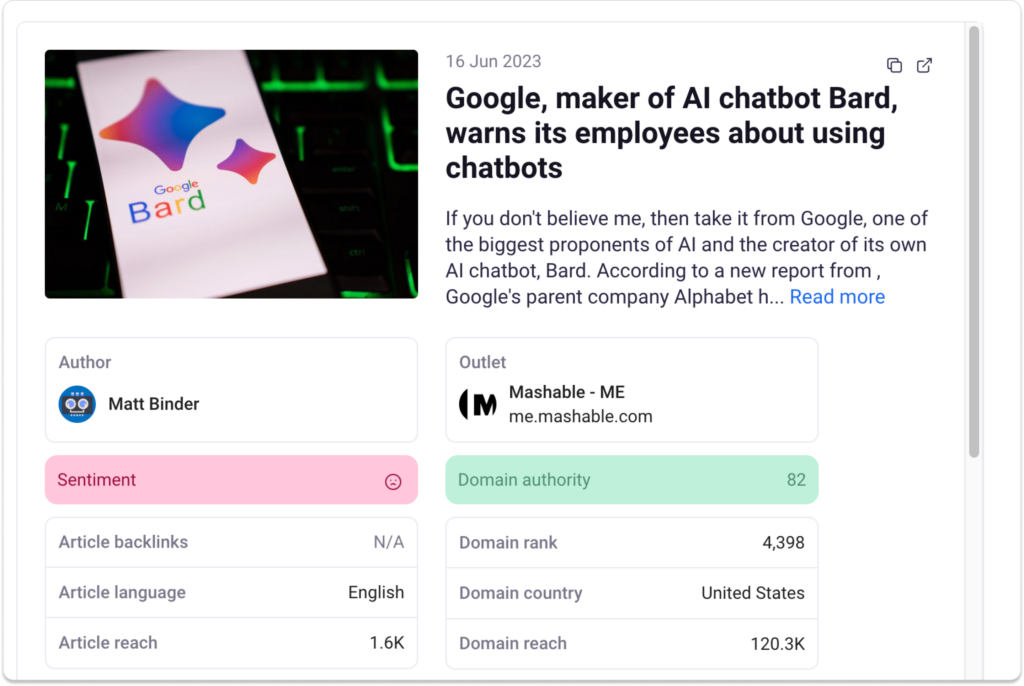
Is it positive, negative or neutral? Find where the spikes and extremes are and determine if this is good or bad press.
Now identify influential voices from the people who mentioned you and find out how much they amplify stories about you. Is it someone worth following up with and asking for more coverage?
3. Competitor & industry tracking (10 min)
Load up your competitors' brand names and their products to see which outlets are (and are not) covering them. While you're at it, check to see which journalists are actively covering industry trends and jot them down so you can pitch them in the future.
4. Crisis detection & response (real-time alerts)
Set up real-time alerts in your favorite media monitoring software for your most important terms so you can get notified as the mentions come in.
Some tools, such as Prowly, can even send you notifications if you're getting a sudden surge of negative media coverage.
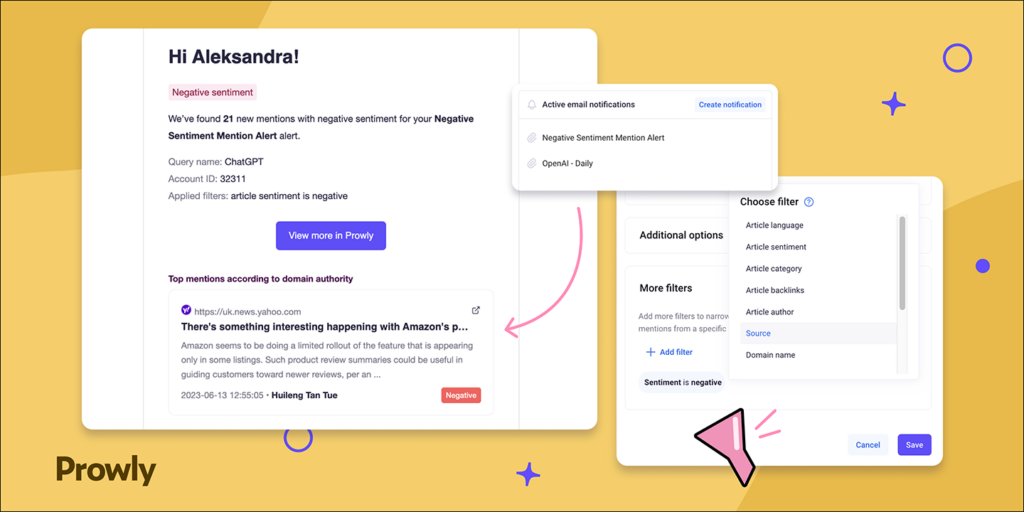
These situations might happen, so have a pre-approved action plan on stand-by. In other word, when a crisis happens, PR and communications professionals should know immediately who does what to fix the situation quickly.
P.S. Here’s an article that might come in handy if you’re looking for a tool to measure the impact of your communication efforts.
5. End-of-day summary (5 min)
Assess the impact of your media coverage for the day, if there is any. If there are any outstanding media mentions, adjust your PR strategy for the upcoming day.
Why traditional media monitoring isn’t enough anymore
Almost every PR tool nowadays tracks media mentions, but not all of them show what's most important. They typically give you a rundown of your mentions and leave you to come up with a conclusion.
Look for AI-based tools like Prowly that go beyond simple media monitoring and are tailored specifically to PR needs.
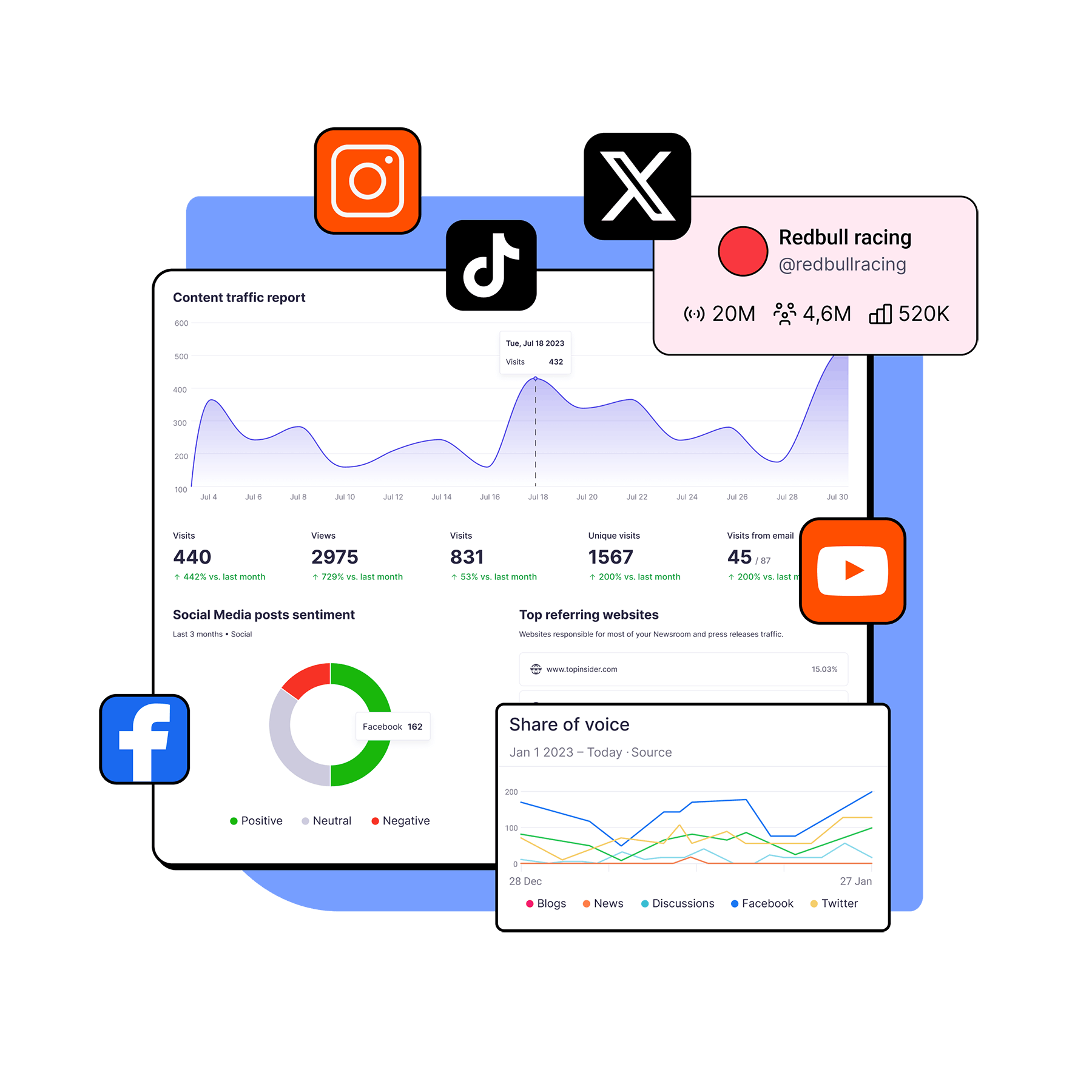
In Prowly, you get detailed metrics on engagement, reach, and journalist intent. You'll understand who mentioned you, in what context, and how many people could hear their message.
With advanced filters and domain tiers, you’ll receive alerts only for the most meaningful coverage, allowing you to prioritize sources in your reports.

For example, a local newspaper mentioning your product won’t carry the same weight as a Newsweek feature on your brand.
You also get cross-channel visibility, bringing together news, social media, and competitor activity in one dashboard—helping you make faster, more informed decisions.
That said, even in today’s digital-first world, don’t overlook the impact of traditional media!
Be sure to check mentions in print magazines, radio programs, and television—especially if you're working with international clients or need to track local newspaper coverage across different regions. With an automated process, you’ll never miss a mention, whether it’s online or offline.
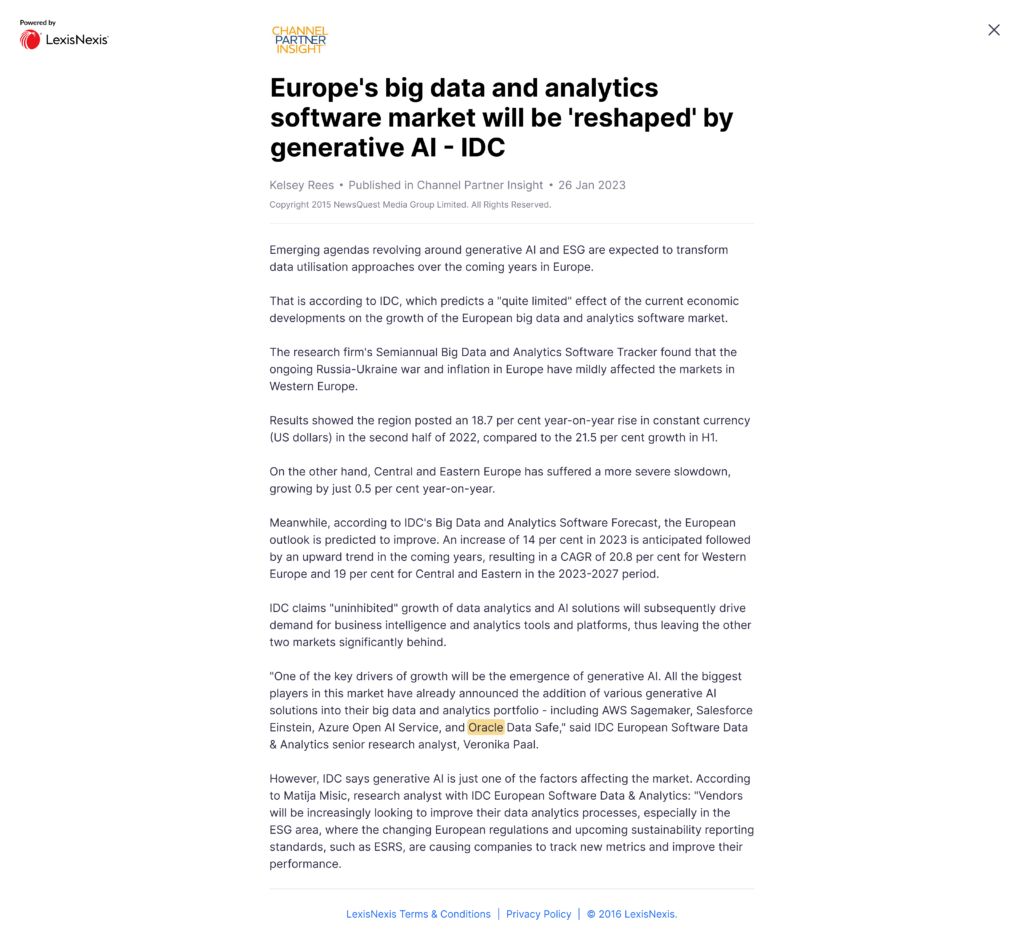
Combine online media monitoring with print and broadcast monitoring in Prowly to have mentions from both digital and traditional news sources at your fingertips—all in one place.
Try Prowly's print & broadcast monitoring free for 7 days
Start tracking your brand and keywords for free (no credit card required) in Prowly.
- Comprehensive Monitoring: Track the web, social media, print, and broadcast mentions
- Transparent Pricing: Plans start at $258/month
- All-in-one platform: Get everything you need in one tool for PR, incl. media database, outreach, reporting, and more
From tracking to strategy: how to turn daily media monitoring into PR wins
Public Relations isn't just about tracking media coverage, it's about participating in the conversation. Here are some tactics that you can use to harness the power of media monitoring tools.
1️⃣ Be the first to comment on emerging stories
For up-and-coming topics, you can be the leading voice that shapes the conversation instead of waiting for everything to blow over.
2️⃣ Be there before the journalists
When you see an uptick in daily mentions for a certain keyword, topic or brand, you can get in on the action and create your own content before journalists pick up the story.
3️⃣ Pick up on competitors' weaknesses
Find out where competitors are present and where you can take the spotlight from them, be it social media, websites, blogs, podcasts, influencer marketing or something else.
Final takeaway: daily media monitoring is a PR superpower
If you asked me 10 years ago, I would have told you that monitoring media coverage on a daily basis sounded like a nightmare and like tons of work.
Nowadays, tools like Prowly make it easy to track your media mentions on a daily basis without lifting a finger. You get all the information on your dashboard, and it's up to you to make the next move. With just a few clicks, you can go from reactive to proactive.
Monitor your daily mentions on autopilot with Prowly!
Looking for a comprehensive all-in-one PR tool?
Try Prowly completely free for 7 days in a platform with everything you need for PR.
- All-in-one software: Get everything you need in one tool for PR, incl. media database, outreach, reporting, and more
- Transparent pricing: Plans start at $258/month
- Comprehensive monitoring: Track the web and social media mentions.

